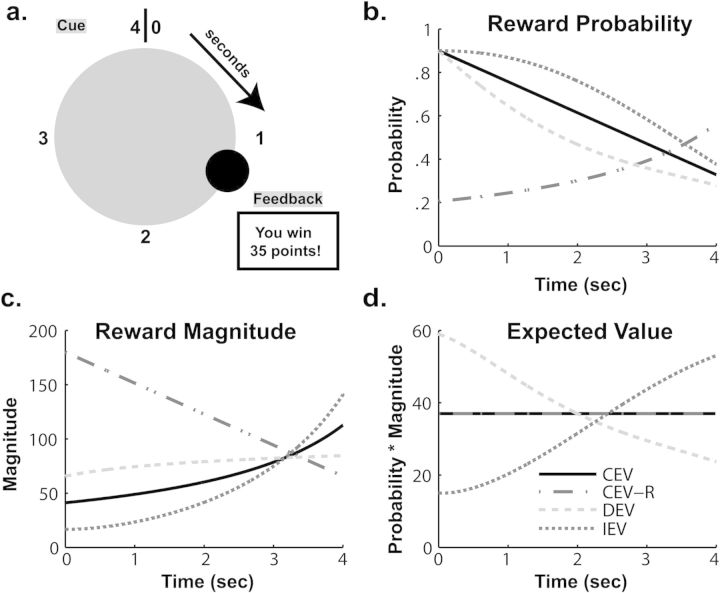Figure 1.
The task consisted of 4 blocks with varying EV of reward depending on RT. (a) Example trial where the participant made a response ∼1.2 s, receiving a 35-point reward. Blocks consisted of different conditions that had varied probabilities (b) and magnitudes (c) or reward over time, creating separate EV distributions (d). To maximize reward, participants need to learn to respond faster when EV decreased (DEV) and slower when EV increased (IEV) compared with when it was constant (CEV). A fourth condition contained reversed magnitudes and probabilities with constant EV (CEV-R); slower responses on this block reflect a preference for magnitudes over probabilities and a risk-averse strategy.

